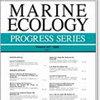Habitat preferences of Phycis blennoides (Pisces: Gadiformes): environmental factors and fishing-related ontogenic deepening
IF 2.1
3区 环境科学与生态学
Q2 ECOLOGY
引用次数: 0
Abstract
ABSTRACT: Phycis blennoides is a component of the ecosystem of the Atlantic waters of northern Spain and a species of commercial interest for fisheries in this region. However, little is known about the distribution of this species. The present study analyses the relationships between different environmental and spatial variables and distribution of P. blennoides. Biological (presence-absence, abundance, biomass and total length) and environmental data were collected from a bottom trawl survey carried out off the northern coast of Spain. These data were used in 2-step generalised additive models to examine both the relative significance of physical factors in influencing P. blennoides distribution and to generate density distribution maps. Additionally, the role of fishing effort on P. blennoides body size distribution with depth was analysed. Geospatial analyses showed that changes in annual abundance did not influence physical habitat preference. Most of the variation in spatial distribution was explained by the sampling position and depth. The analyses showed that P. blennoides exhibited habitat preferences in the waters of Galicia and the Cantabrian Sea, with higher values of presence, abundance and biomass on the upper slope and on fine-grained sediment bottoms. P. blennoides biomass increased with depth, probably due to the increased mean size of individuals with depth. Modelling results suggest that the observed ontogenetic deepening appears to be mainly driven by the life history strategy of the species, but is also reinforced by fishing effort.Phycis blennoides(双鱼:鳕形目)的栖息地偏好:环境因素和与捕鱼有关的本体加深
摘要:Phycis blennoides 是西班牙北部大西洋水域生态系统的一个组成部分,也是该地区渔业中具有商业价值的一个物种。然而,人们对该物种的分布知之甚少。本研究分析了不同环境和空间变量与 P. blennoides 分布之间的关系。生物数据(存在-不存在、丰度、生物量和总长度)和环境数据均来自在西班牙北部海岸进行的底拖网调查。这些数据被用于两步广义加法模型,以研究物理因素对 P. blennoides 分布的相对影响,并生成密度分布图。此外,还分析了捕捞强度对 P. blennoides 体型随深度分布的影响。地理空间分析表明,年丰度的变化并不影响对物理栖息地的偏好。取样位置和深度可以解释空间分布的大部分变化。分析表明,P. blennoides 在加利西亚和坎塔布里亚海水域表现出生境偏好,在上坡和细粒沉积物底部的存在率、丰度和生物量值都较高。P. blennoides的生物量随深度增加而增加,这可能是由于个体的平均大小随深度增加而增加。建模结果表明,所观察到的个体深度似乎主要是由该物种的生活史策略驱动的,但也受到捕捞活动的影响。
本文章由计算机程序翻译,如有差异,请以英文原文为准。
求助全文
约1分钟内获得全文
求助全文
来源期刊

Marine Ecology Progress Series
环境科学-海洋学
CiteScore
5.30
自引率
8.00%
发文量
238
审稿时长
3 months
期刊介绍:
The leading journal in its field, MEPS covers all aspects of marine ecology, fundamental and applied. Topics covered include microbiology, botany, zoology, ecosystem research, biological oceanography, ecological aspects of fisheries and aquaculture, pollution, environmental protection, conservation, and resource management.
 求助内容:
求助内容: 应助结果提醒方式:
应助结果提醒方式:


